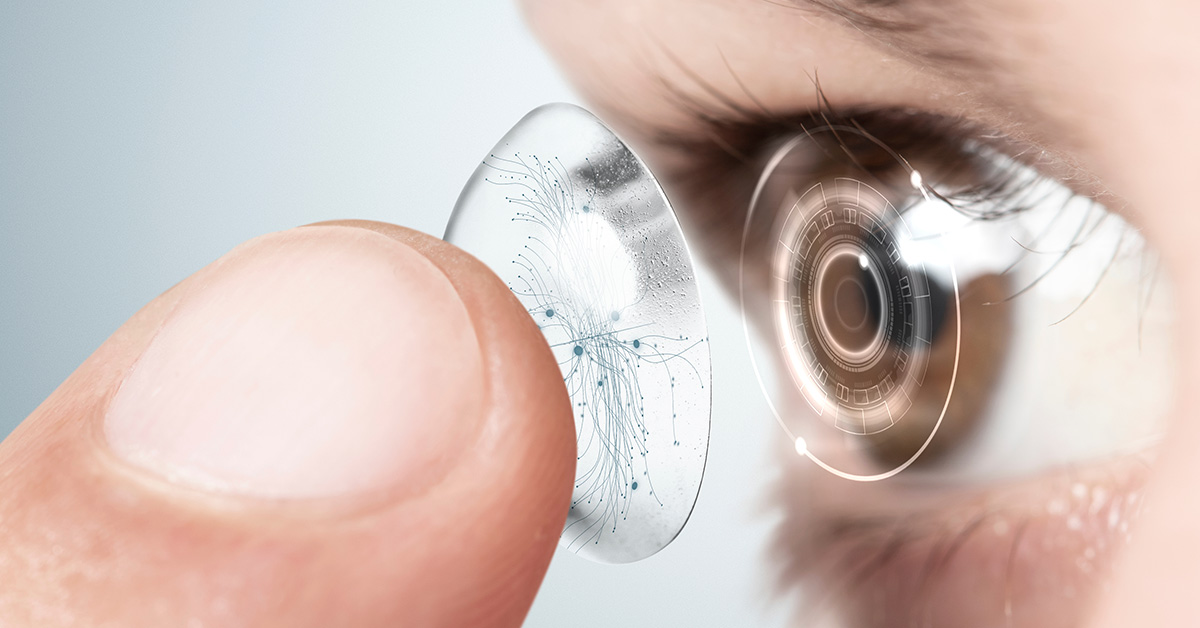Whether you have type 1 or type 2, having Diabetes is not easy. So far, scientists have been unable to find a cure, so patients must follow various treatment and monitoring regimes throughout their lives. This means constant finger pricking and insulin shots. However, this latest technology promises an easier solution to help with management of the disease: Contact lenses for Diabetes. (1)
Contact Lenses For Diabetes
The research team at Pohang University of Science and Technology (POSTECH) has developed contact lenses that can monitor insulin levels and administer the necessary amount of insulin to keep the wearer’s blood sugar stable. Not only that, but these smart contact lenses for Diabetes can also detect the disease and treat diabetic retinopathy. All the patient has to do is wear them. (1)
These wireless lenses use electrical signals to detect the illness and control the necessary delivery of drugs based on the wearer’s needs. They are made of biocompatible polymers, biosensors, drug delivery, and data communication systems. (1)
How The Lenses Work
The team, comprised of Professor Sei Kwang Hahn and graduate students Do Hee Keum and Su-Kyoung Kim of POSTECH’s Department of Materials Science and Engineering, as well as Professor Jae-Yoon Sim and graduate student Jahyun Koo of Department of Electronics and Electrical Engineering, first made a crucial discovery:
The glucose level in the tears of diabetic rabbits was the same as their blood glucose levels. (1)
They tested the contacts by using them to determine the glucose level in the tears while also using conventional methods to test the glucose level in the rabbits’ blood. (1)
The contact lenses for Diabetes have five parts that allow them to detect, monitor, and treat the illness (1):
- Remote radio frequency (RF) communication system
- An electrochemical biosensor that detects glucose levels in real-time
- On-demand flexible drug delivery system (f-DDS)
- A resonant inductive wireless energy transfer system
- Integrated circuit (IC)–based microcontroller chip with a power management unit (PMU)
The lenses themselves are no thicker than ordinary contact lenses, making them easy and comfortable to wear. (1)
Other Uses for this Technology
The researchers confirmed that this type of wearable medical technology is not only beneficial for Diabetes. Research is being done to expand the use of technology to include other conditions, such as Alzheimer’s and Parkinson’s Disease, and mental health illnesses like depression. (2)
“Despite the full-fledged research and development of wearable devices from global companies, the commercialization of wireless-powered medical devices for diagnosis and treatment of diabetes and retinopathy is insufficient,” said lead researcher Professor Sei Kwang Han. “We expect that this research will greatly contribute to the advancement of related industries by being the first in developing wireless-powered smart contact lenses equipped with drug delivery system for diagnosis and treatment of diabetes, and treatment of retinopathy.” (3)
The research team is planning to conduct clinical trials on the safety and validity of the smart contact lenses. These lenses are not yet available on the market, but with further research and development, they could change the way we diagnose, monitor, and treat Diabetes.
Keep Reading: Scientists Found a Way to Communicate With People Who Are Asleep And Dreaming
- “Wireless smart contact lens for diabetic diagnosis and therapy.” Science Mag. Do Hee Keum, et al. April 24 2020.
- “Multifunctional materials for implantable and wearable photonic healthcare devices.” Nature. Geon-Hui Lee, et al. January 7, 2020.
- “Smart contact lenses that diagnose and treat diabetes.” Science Daily.

